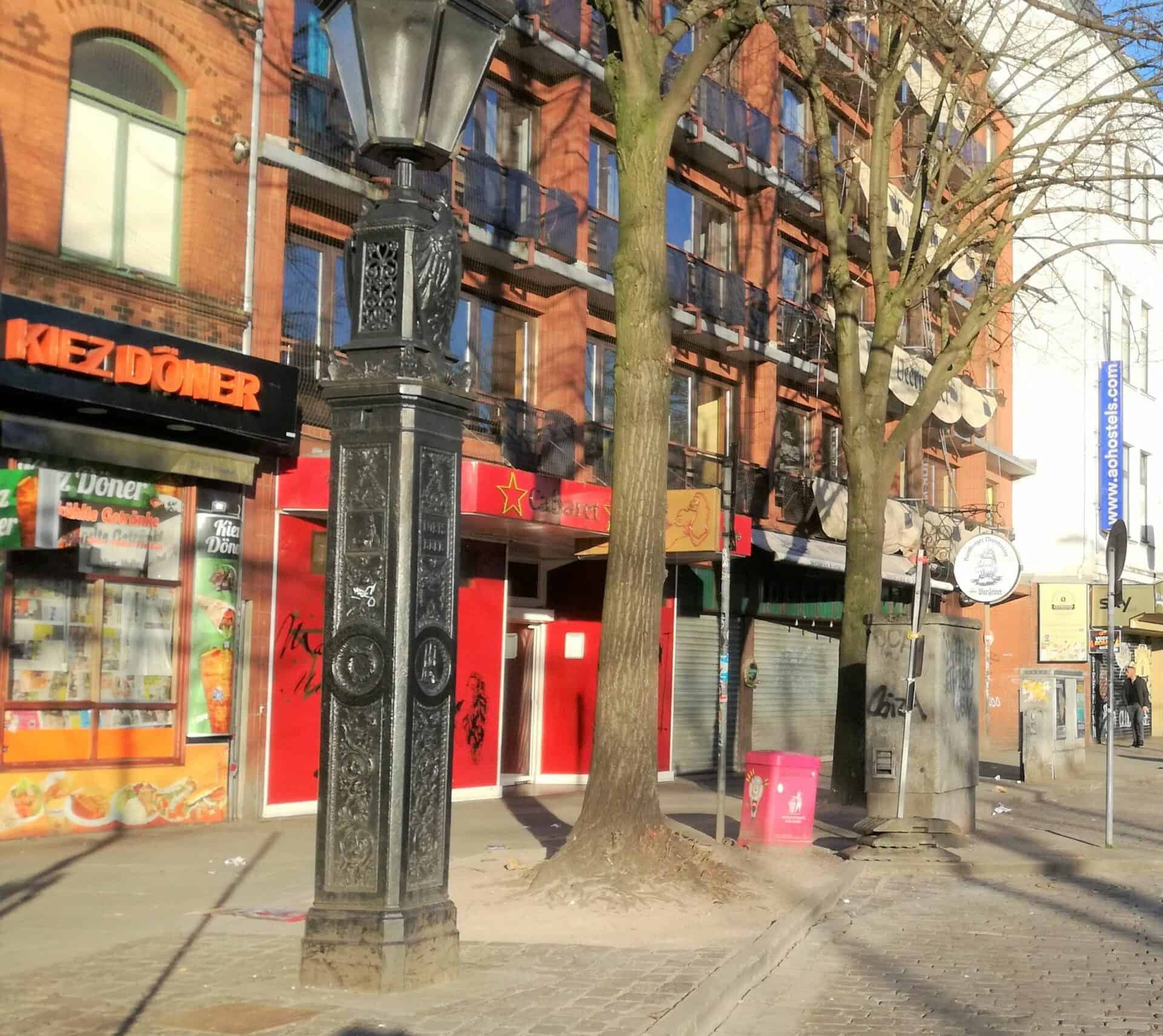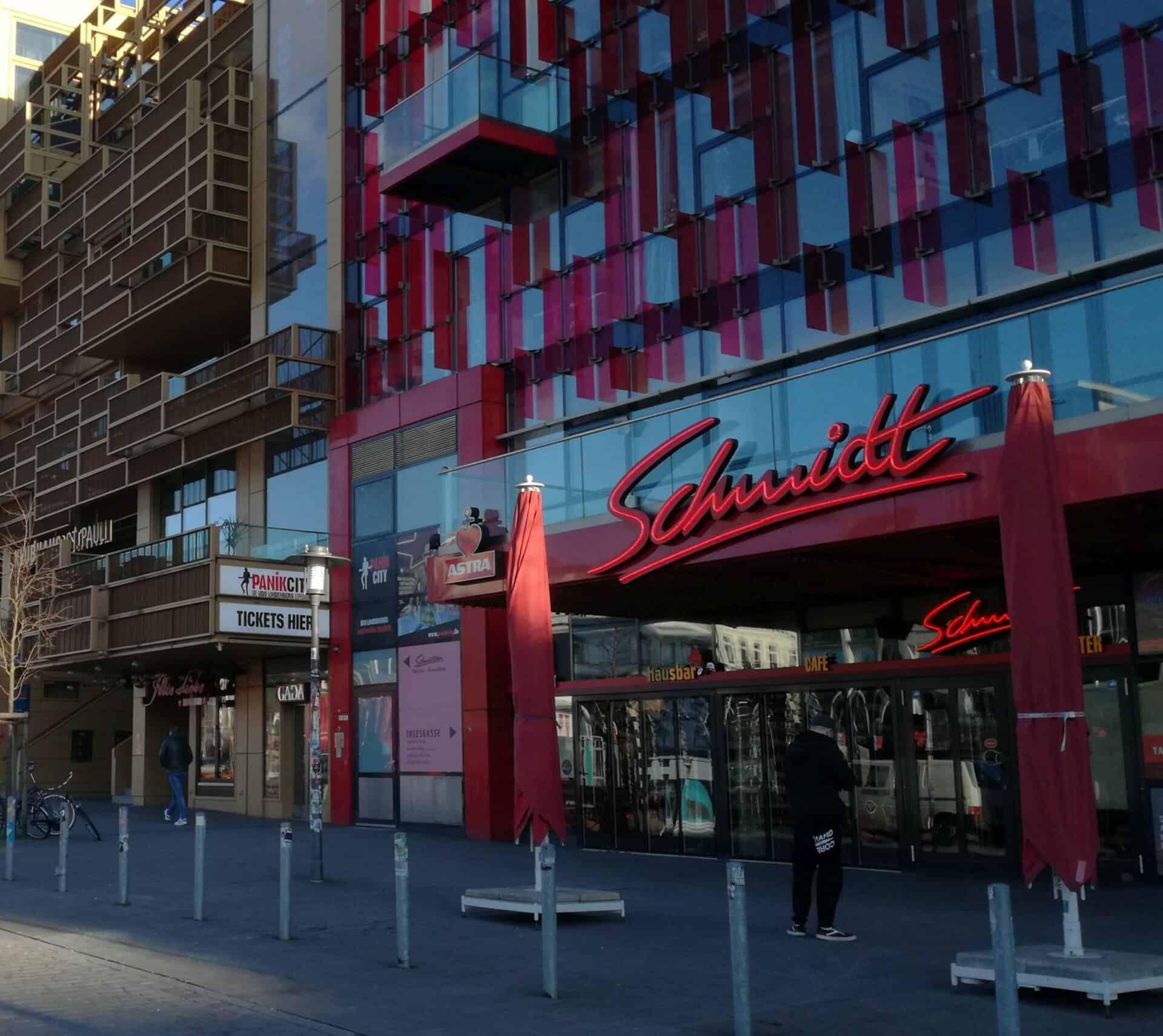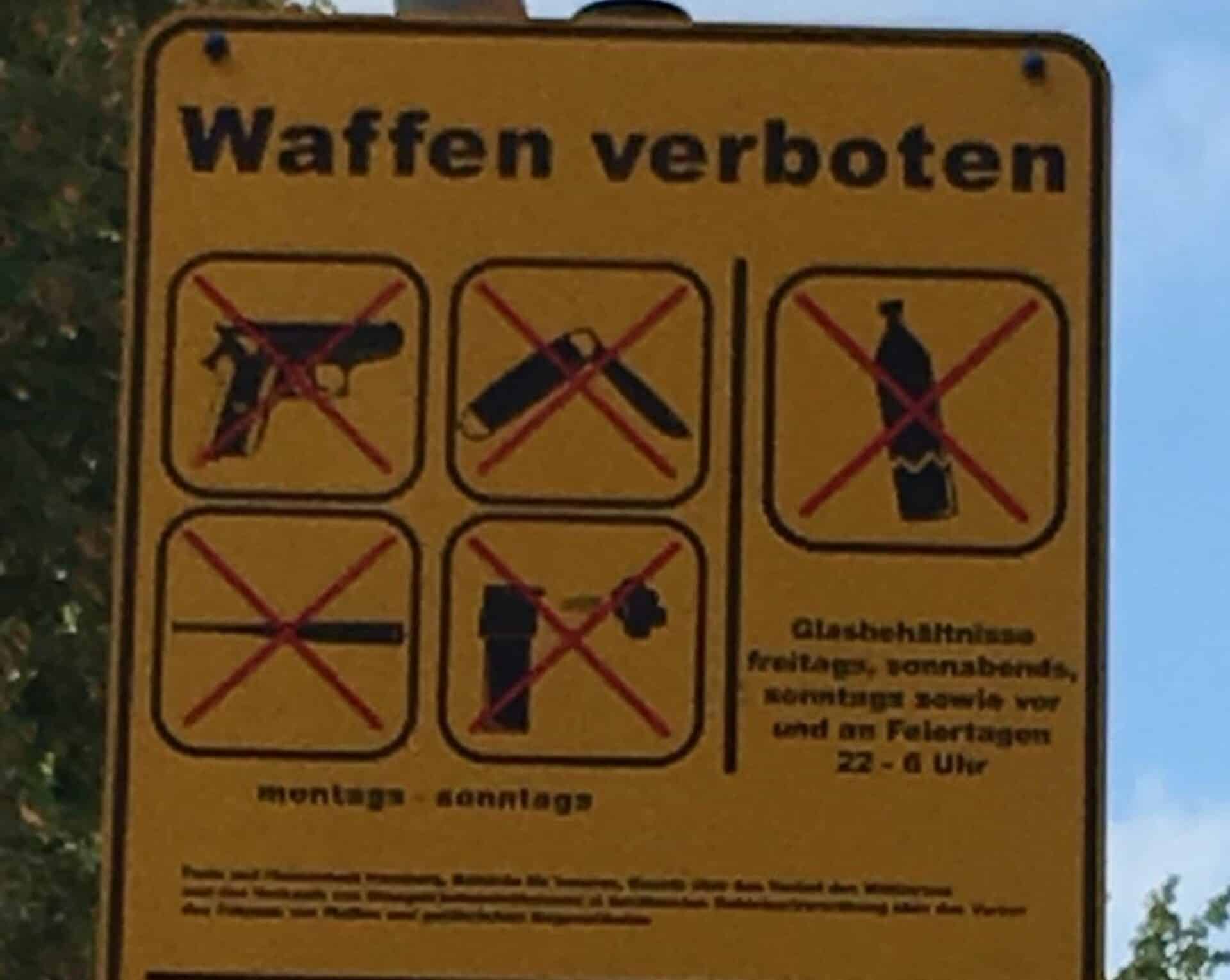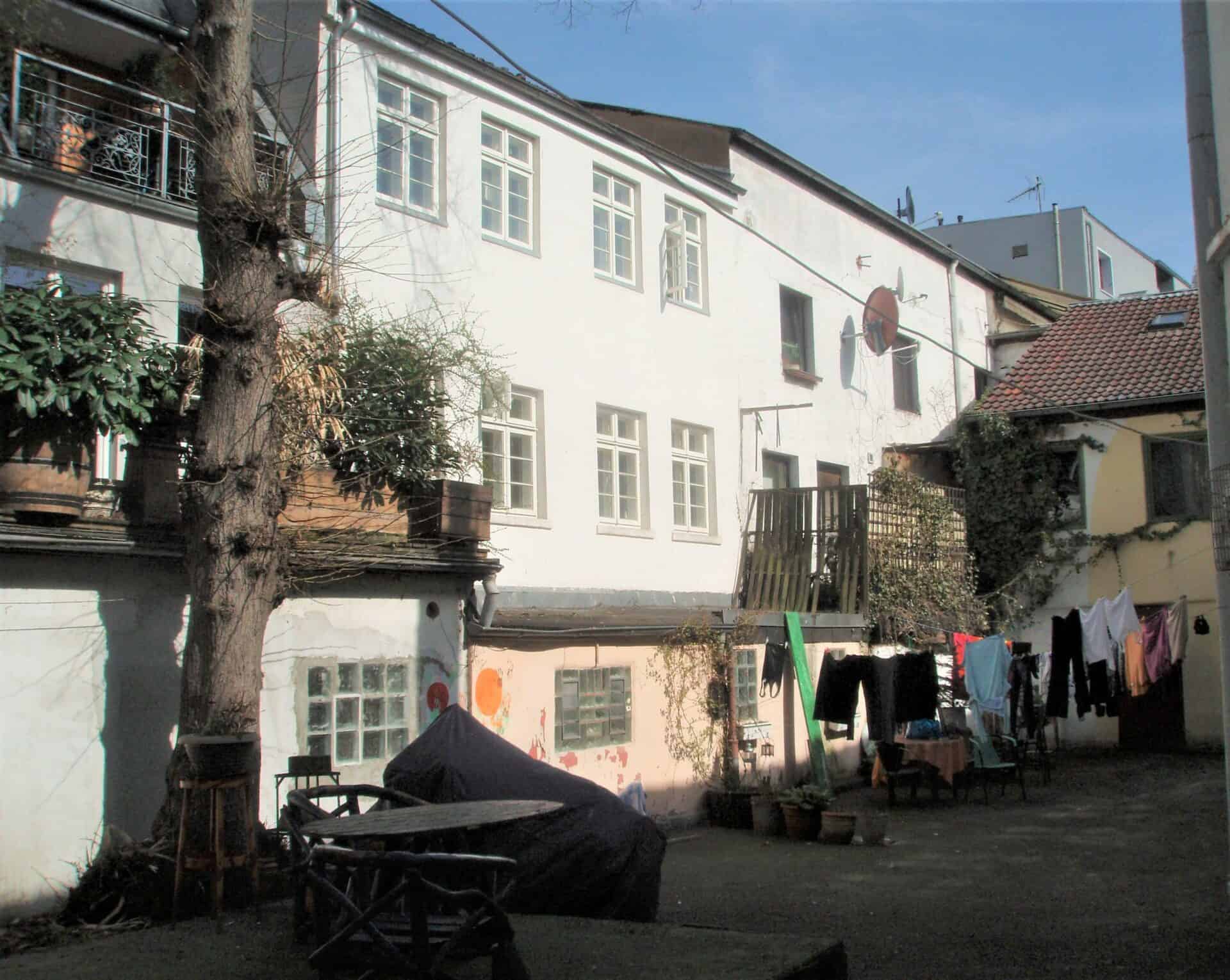Reeperbahn/Take a St. Pauli tour with a Greeter
![]() The Reeperbahn is certainly the most famous street in Hamburg, but St. Pauli is much more. Our Greeter Hartmut tells about it.
The Reeperbahn is certainly the most famous street in Hamburg, but St. Pauli is much more. Our Greeter Hartmut tells about it.
St. Pauli belongs to the district of Hamburg Mitte, has about 22,000 inhabitants and is today, at least around the Reeperbahn, the entertainment and entertainment district of Hamburg with up to 120,000 visitors on weekends. But thank God there are also the many colorful birds and St. Paulians who live their lives the way they like; perhaps gawked at or smiled at by visitors to the neighborhood, but open and tolerant. In any case, they are better than the guests who come already drunk and behave in a way they wouldn’t dare “at home”.
A St. Pauli Greet – a guided tour of a special kind – is an opportunity to explore the Reeperbahn and St. Pauli with the Hamburg Greeters and to experience a cross-section of the personal composition of our society. Loud and colorful – but also right next to the Reeperbahn tranquil, familiar, quiet and creative. You should definitely experience this area as well.
In the Heart of St. Pauli
Where everything comes from
If you walk west along the Reeperbahn, you might spot a black iron column just before Beatles Platz, although hardly anyone actually notices it: even ask a St. Paulian about it. It is one of the last visible signs of the separation between Hamburg and Altona, which was Danish between 1664 and 1867 and temporarily became the second largest city in Denmark after Copenhagen. After subsequently becoming part of Schleswig-Holstein, Altona did not become part of the “Land” of Hamburg until the “Greater Hamburg Act” of 1937, but then lost its status as an independent municipality when it was incorporated into the “City of Hamburg” on April 1, 1938.
On the other side of the border were Hamburg and the “pepper sacks”. They sent all trades that were “disreputable” or required too much space behind their city gates. For example, in addition to the Pesthof, the Reepschläger, who turned the ropes for the ships and needed very long lanes for this. Hence the name Reeperbahn. At that time, the area in front of the gates was still called Hamburger Berg. A side street is still called that today.
Of course, the amusement arcades, jugglers and prostitution did not fit into the fine city. They then settled in the area up to Altona: gambling booths, showmen, etc. – the Spielbudenplatz was created. Also Hagenbeck was represented with his seals and “Völkerschauen” (e.g. “Primitive Men” like Firelanders, Hottentots, Austral N* and others). Late at night the horn was blown on the Michel – this meant: the Hamburg city gates will close in 15 minutes. This was the beginning of the “gate closing panic”, i.e. drinking out your beer and quickly going back and through the city gate. It was not until 1860 that the gate lock was lifted.
On the Altona side, everything was open: There was no city gate, only a chain across the street, just from the iron pillar to a second one on the other side of the street. And Altona was also more open in other ways, namely more tolerant in religious and commercial matters. And so the street names Große Freiheit and Kleine Freiheit do not come from sexual freedom or openness, as one might assume today, but they refer to the freedom of religion and commerce in Altona at that time.
This is why Hamburg’s city coat of arms still shows a closed city gate today, while Altona’s shows an open city gate.
Theatre, Art and Culture
The Spielbudenplatz (“Gambling-Booth Square”) quickly developed into an entertainment magnet even for the “better” Hamburgers after the end of the gate blockade. The time of wooden booths and tents was over. This hustle and bustle received a solid framework when it had to give way to solid commercial buildings from 1840.
Of these, only the St.Pauli Theater, which used to be the Urania Theater with 1300 seats, is still preserved today, as well as a red facade next to it. Exactly, only a facade, behind it the area is empty. Originally concert hall “Die Neue Welt”, then Amerika Bar and finally a wave pool. Like so much in St.Pauli, it has become an object of speculation.
Where the “funnel” was before the war, a bowling alley was built and today there are the “Dancing Towers”. On the forecourt it can happen that you stand on the entrance of the “Mojo Club”. Only when it is open, two large entrances pop out of the ground. Right next to it there is still the Panoptikum, opened in 1879, destroyed in World War II, rebuilt, it is still owned by the Faerber family and worth a visit. Also on Spielbudenplatz are the Operettenhaus and Corny Littmann’s theaters. Theaters and musicals have made St.Pauli today also a center of attraction for their lovers.
Not to forget the many music clubs such as the “Grünspan”, which was already built in 1899 as a dance hall. In general, not only since the ReeperbahnFestivall Hamburg has become an international hotspot for bands and musicians. Alone in 2019, about 50,000 guests visited the four-day event with 600 concerts.
But it certainly began with the Beatles, who had about 800 performances between 1960 and -62, clearly incl. the beginnings in the Indra. Clubs like Star Club, Top Ten or Golden Pudel Club are history, but St.Pauli is still the center of music in Hamburg.
In the middle - pubs and red light
Where is the border between art and red light? With the Salambo of Rene Durand, finally closed in 1997 or the Safari of Hans-Henning Schneidereit, that was closed after his death in 2014 after 50 years, the last live sex stages disappeared from St.Pauli. These sights have probably been taken over by the Internet. They had little to do with the strip shows in the Dollhaus or various bars today.
In 2001, the Pulverfass (powder keg) moved from St.Georg to St.Pauli and is now the largest travesy theater in Europe. All this is a question of personal taste.
Countless pubs and bars are to be found. Less for sex, but certainly for contact. Some, like the Ritze, are known all over Germany. The boxing rings in its basement, which appear in many films, is legendary, even if official competitions never took place there. The ring does not meet the regulations because it is a bit too small. It was owner-managed by Hanne Kleine until his death in 2011. These pubs still exist or continue to operate, like Gretel and Alfons or the Silbersack. But mostly they disappear after the death of the owner or become “filling stations” for Kiez visitors with changing owners. You have to know your way around a bit to still find the personal meeting places.
Easy to find are the prostitutes, because they are only allowed to stand on the west side of Davidstraße, Herbertstr. and around Hans-Albers-Platz from 8 p.m.
And order is ensured by the police department 15, the Davidwache. With an area of barely one square kilometer, it is the smallest police station in Europe. 130 officers work there in shifts, although on weekends the number is sometimes increased by a hundred from other parts of the city. In 2005, it received an annex for the criminal investigation department and the department for road traffic matters.
So you don’t have to feel unsafe, just observe certain rules, like everywhere else.
Right next door - "quiet and "familiar
But it is also worthwhile to stroll away from the Reeperbahn. Let’s start in the direction of the Elbe at the Landungsbrücken, pure harbor and always beautiful even for Hamburgers. Up the Bartels stairs and along the footpath “Bei der Erholung”, with a fantastic view of the harbor, very quiet, sit on a bench and let everything take effect.
Then the Bernhard-Nocht-Str., even at the HafenstraßenHäusern (squatted in the 1980s) it has become bourgeois. Unfortunately, almost nothing is left of the Erotic Art Museum. Then the St.Pauli church and the Antoni Platz, also called Park Fiction. Here, too, residents’ initiatives managed to prevent the final development and closure of the last open spaces. Since 2006, a meeting place under metal palms for local residents, with a view of the Elbe and the Blohm and Voss shipyard.
Next door is Hein-Köllisch-Platz. You forget about the Reeperbahn, even though it’s only a seven-minute walk away. Here, residents or insiders sit comfortably in the street coffee, for example in the “Doppelschicht,” an old customs house.
And now a jump to the north of the Reeperbahn, at the end of the Große Freiheit. Paul-Roosen- / Clemens-Schulz Str., that’s Montmartre in Hamburg. Small restaurants and bars, artists and boutiques, even if a lot of Turkish is spoken.
Here too, a lot is going on in the evening and on weekends, but a different crowd, no bachelor parties or flat rate boozing, hardly any tourists. People know each other and help each other. That’s how the St.Paulians prefer to see themselves, “village-like”.
It still exists, even though gentrification is showing its claws here too and leaving its mark. Money usually wins.
If you go further north along Wohlwillstr, you come to the Schanzenviertel – but that’s another, often similar story.
All about "Greets"
- Duration: two to three hours and absolutely free
- Max. 6 people, no combination of different requests
- Meeting point and exact route: by agreement between guest and Greeter
- Request: please at least two weeks before desired date
- More about Greets




